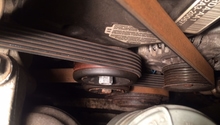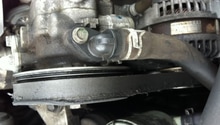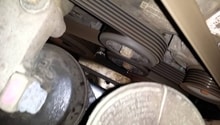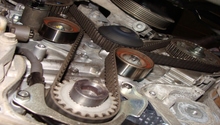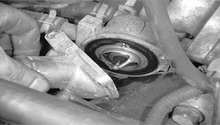Acura RDX: Engine Noise Diagnostic Guide
Read on to see how to identify and correct engine noise to restore that premium Acura experience.
This article applies to the Acura RDX (2007-2016).
The first generation Acura RDX was the launch platform for Acura's first turbocharged engine. Producing 240hp and infused with traditional Acura simplicity, the 4-cylinder K23A1 has a variable flow turbocharger controlled by a maintenance-free diverter valve. The exhaust manifold is water cooled for long service—and with proper care, the K23A1 should go to 200k miles without major issues. The punchy four-banger, paired with Super Handling AWD, has a quick, boy-racer feel, but a bit less refinement than may be expected in this class.
For the second generation RDX, Acura changed to a smoother, more mature feeling 3.5L V6. The J35Y, with Variable Cylinder Management uses iVTEC to shut down 2 or 3 cylinders during low demand, such as when cruising between 30 and 70 MPH. For 2016, the J35Y produces 279hp and 252 ft-lbs of torque. The choice of 2WD or conventional slip-to-grip AWD yields a more cultivated drive and better fuel economy.

As is characteristic of Acura products, both engines are designed for long service. However, each engine has had noise issues, which we will identify and address below.
- Drive belt squealing
- Exhaust shield rattling
- Power steering whining
- Engine hesitation
- VCM and ABS noise
This may sound daunting, but fortunately Acura simplicity shines through, and servicing as well as fixing any issues that arise couldn't be more simple.

Materials Needed
- Spray water bottle
- Mechanic's stethoscope
- GearWrench tool 3680
- Phillips screwdriver
- Metric socket set
- Power steering O-ring 91345-RDA-A01
- Acura power steering fluid
Step 1 – Serpentine belt noise
The most common RDX engine noise comes from the serpentine belt. Repetitive squeaking indicates the belt is not running true. Prolonged squealing means the belt is overheating, which is typically a mechanical problem with a worn auto-tensioner.
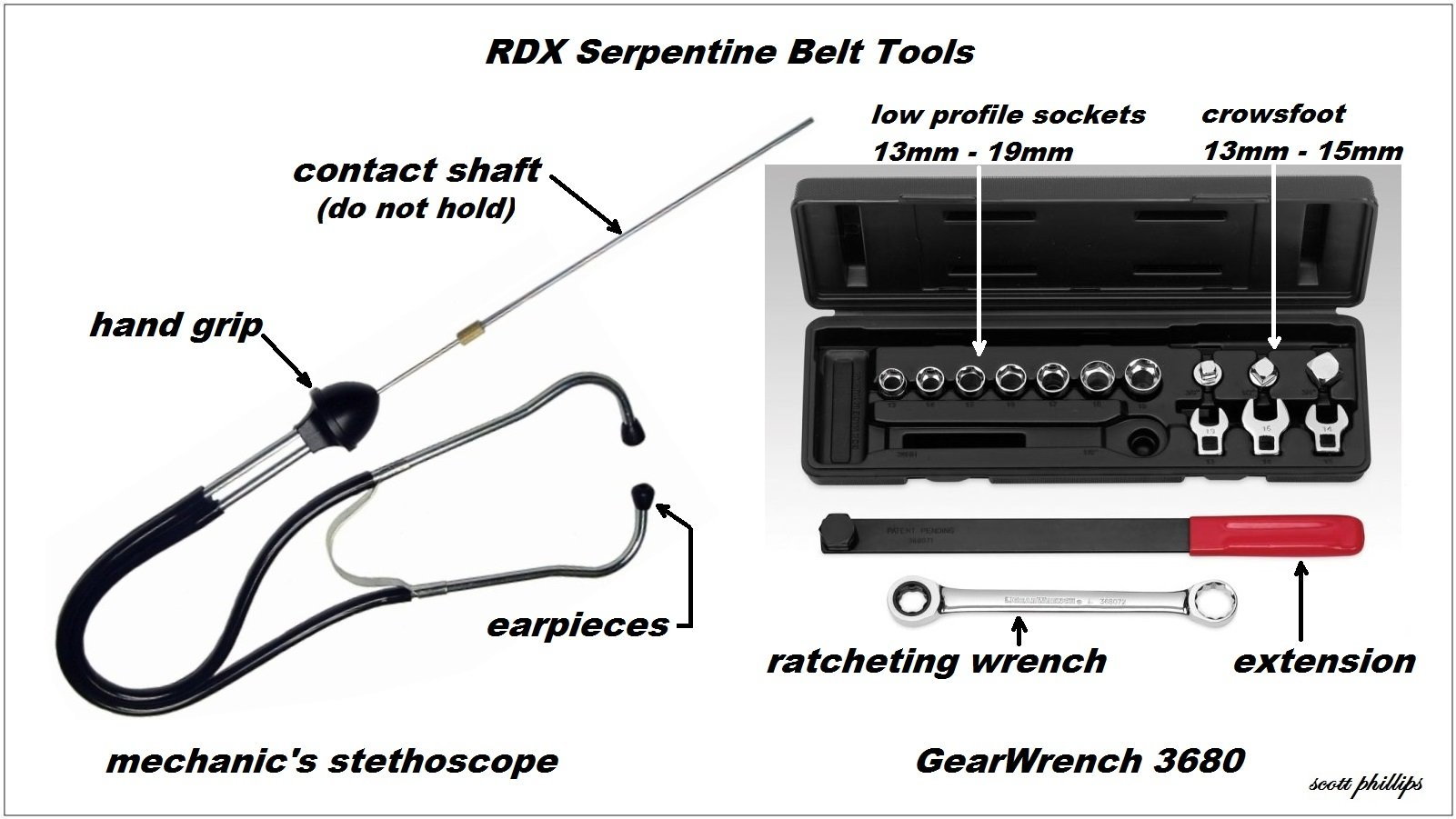
- While the engine is idling, with the air conditioner on, lightly spritz the belt with a spray water bottle. Steady or increasing noise indicates the belt tensioner is weak and should be replaced. Temporary quieting indicates the pulley bearings are worn.
- To isolate pulley bearing noise, use a mechanic's stethoscope. Place the tip of the stethoscope on the non-moving, center bolt of the tensioner pulley. When amplified, a good bearing will hum quietly and a worn bearing will grind or scrape.
- On the tensioner body, check that the belt wear indicator is not outside of the low range. Visible tensioner vibration is another sign that the tensioner spring is weak.
- Use GearWrench tool 3680 to replace the belt. The 14mm socket fits on the tensioner pulley bolt and the tool is used to relieve spring pressure and loosen the belt.

Pro Tip
Always use caution working around the idling engine. Ensure that clothes and tools are not caught in the serpentine belt.
Step 2 – Exhaust tinny, buzzy rattle
The Gen 1 RDX exhaust heat shield may come into contact with the air conditioning water drain line. The heat shield is thin aluminum and makes a tinny, buzzy rattle from under the front of the RDX, often when backing up. When the engine is cool, you can slide under the car and flex the heat shield with your hands to bend it away from touching the A/C drain line.
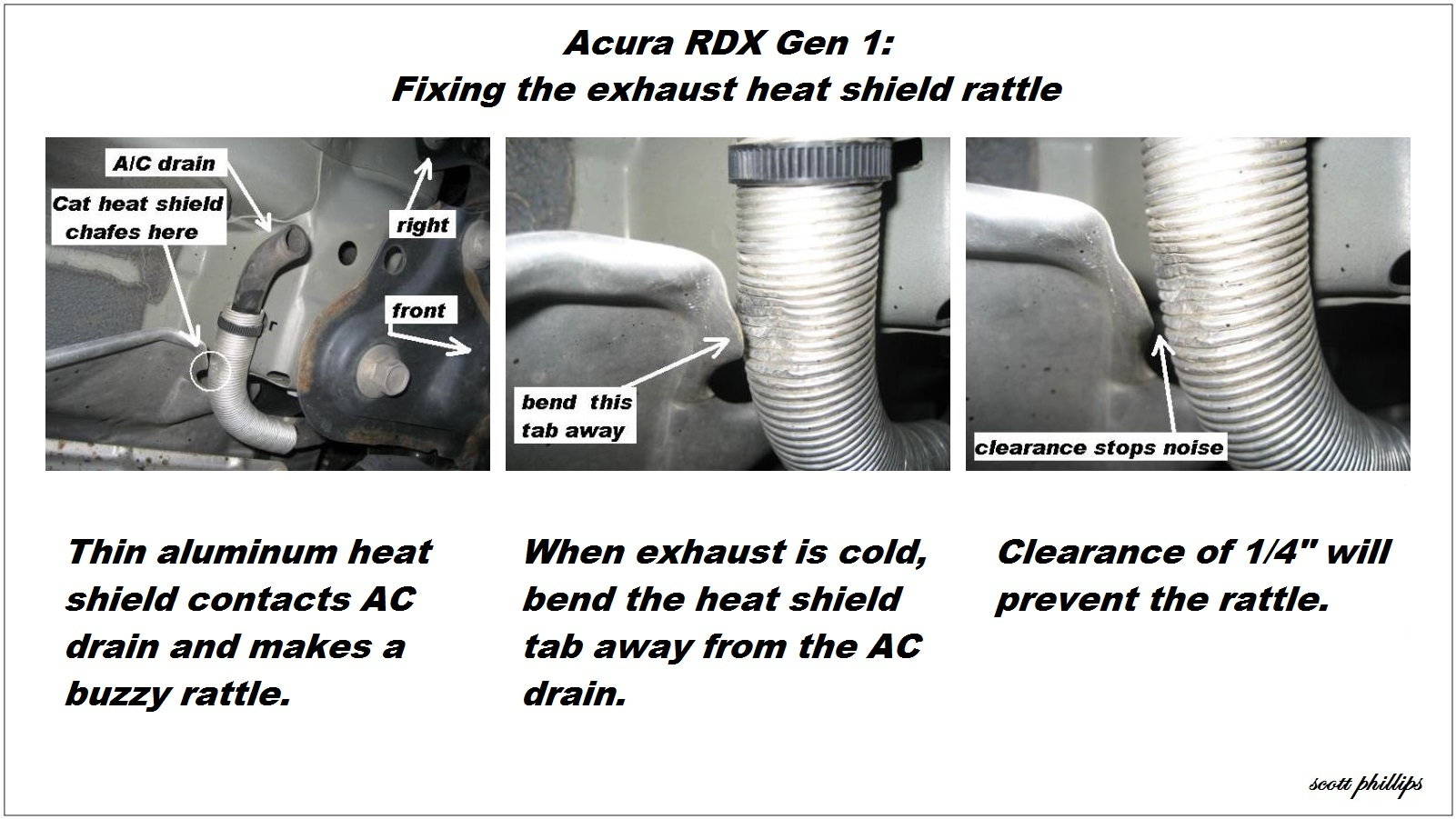
Pro Tip
Wear mechanic's gloves to protect your hands from sharp edges on the heat shield.
Step 3 – Coughing/hesitation during acceleration
Under wide-open throttle, the RDX engine consumes large quantities of combustion air. A heavily clogged engine air filter chokes off some of that incoming air, causing coughing and hesitation during acceleration. For best power, the air filter should be changed at least once a year or every 15,000 miles. This may seem unlikely at first glance, but turbocharged engines that use MAF sensors to meter incoming air, like the RDX, can be temperamental to changes in the intake tract.
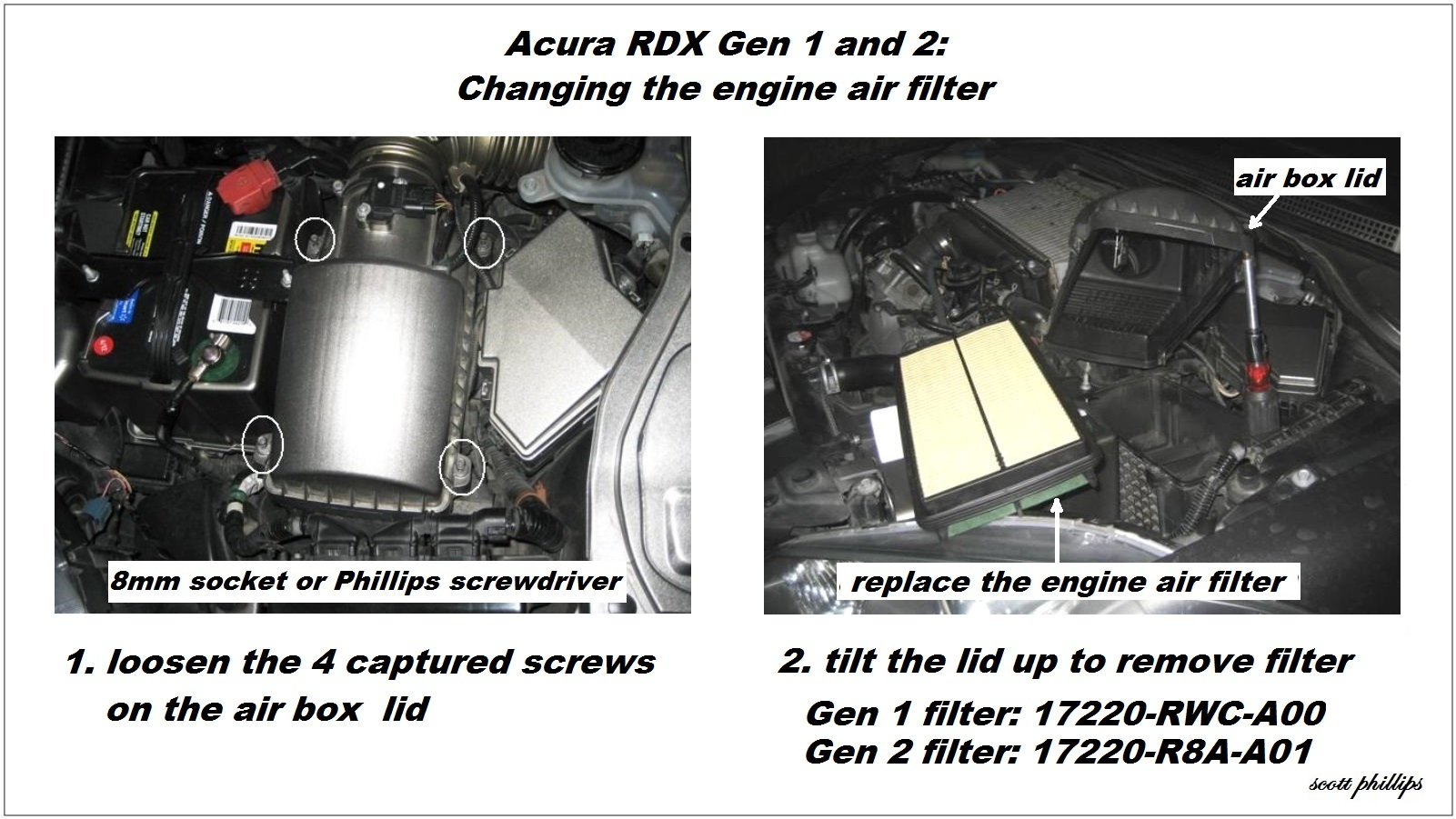
Step 4 – Power steering whine
The Gen 1 RDX power steering pump inlet line can sometimes leak, allowing air into the PS pump, which foams the fluid and makes a whining sound that you can hear from the engine bay when making low speed turns. Remove the inlet hose using a 10mm wrench and replace the O-ring on the hose nozzle. If needed, add Acura power steering fluid to the cold line on the reservoir.

Step 5 – Variable Cylinder Management (VCM) fluttering noise
The Gen 2 RDX V6 engine is equipped with Variable Cylinder Management, which shuts down 3 of the 6 cylinders when the engine is not working hard. The operation of VCM can sometimes be heard as a fluttering sound at low speed and low RPMs, as well as cruising on the highway. This sound is normal and indicates that the VCM is working and saving gas.
Related Video: Acura VCM System
Step 6 – ABS self-check noise
For many years and generations of vehicles, the Honda/Acura ABS has performed a system check after you start the engine and begin to drive. At about 15 MPH, the system check can be heard making a short series of distinct beeps or clicks. This is normal and determines that the ABS will aid you in stopping and steering during an emergency stop, or on slick roads.
Related Discussions
- RDX Rattling Noise - AcuraZine.com
- 2015 RDX Rumbling Sound - AcuraZine.com
- Rattling/Popping Noise at 20 mph When Engine is Cold - AcuraZine.com

